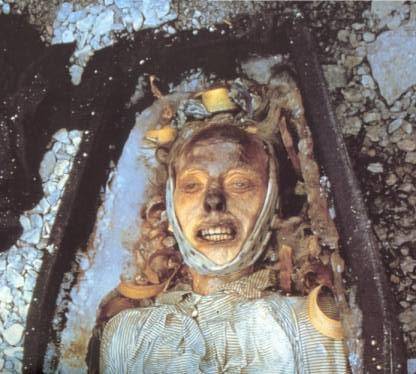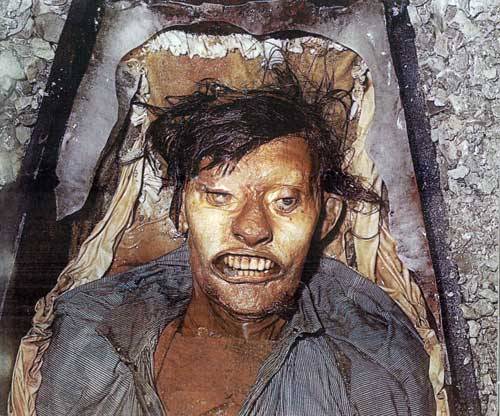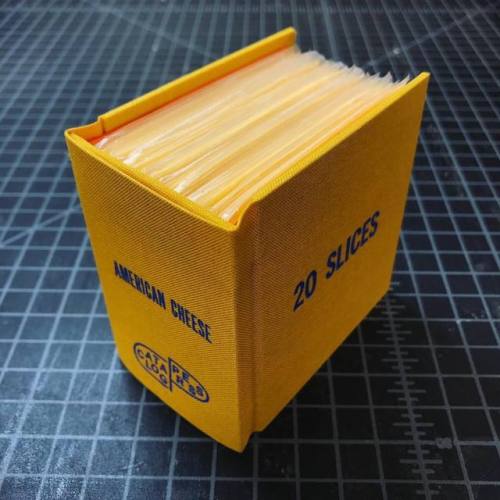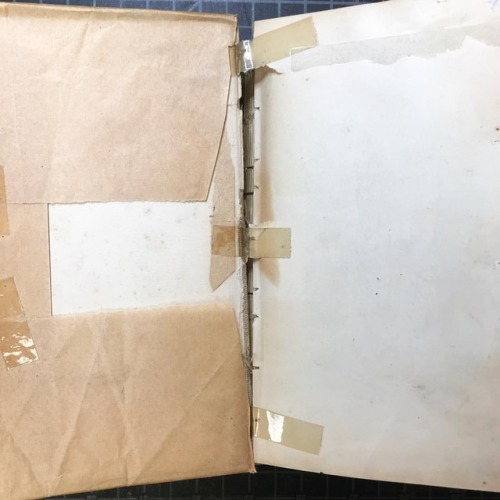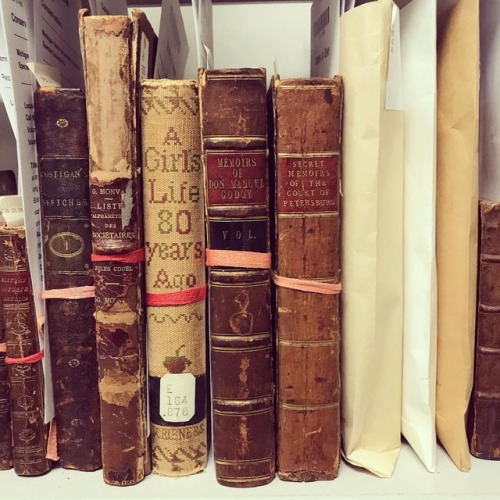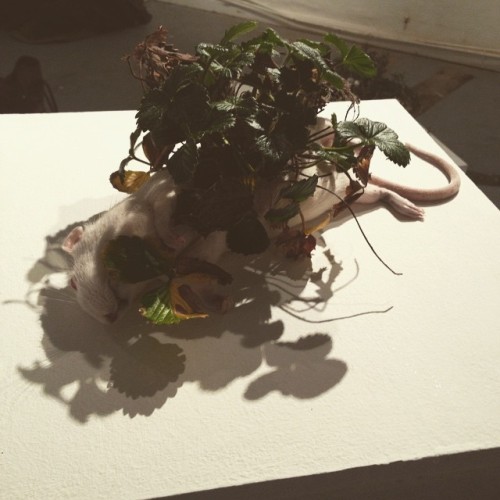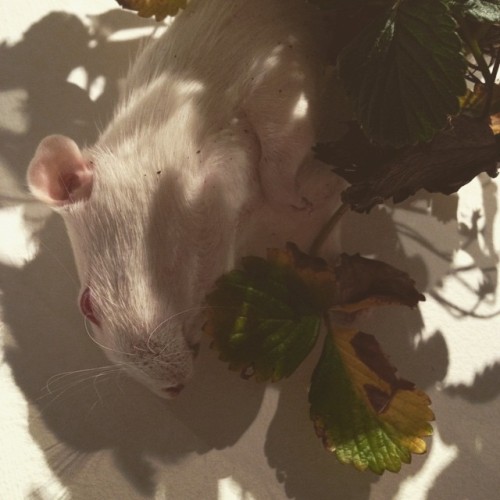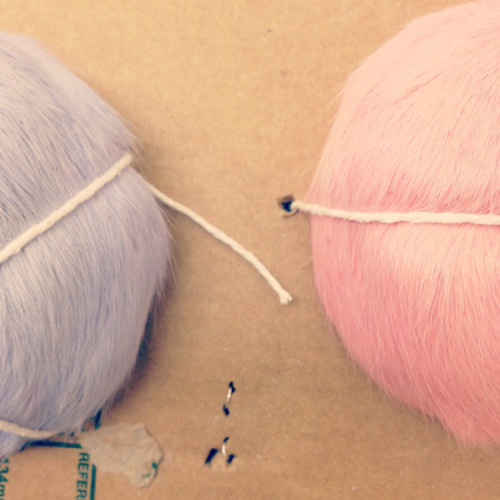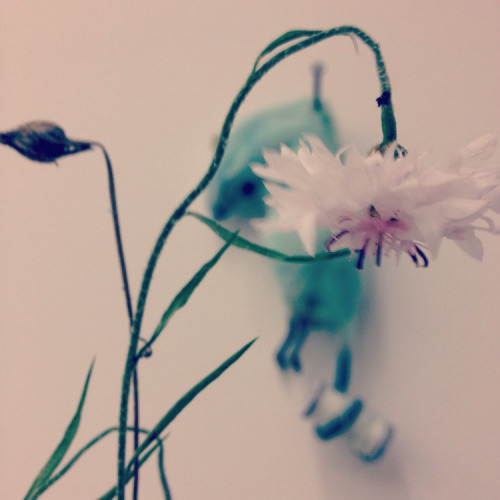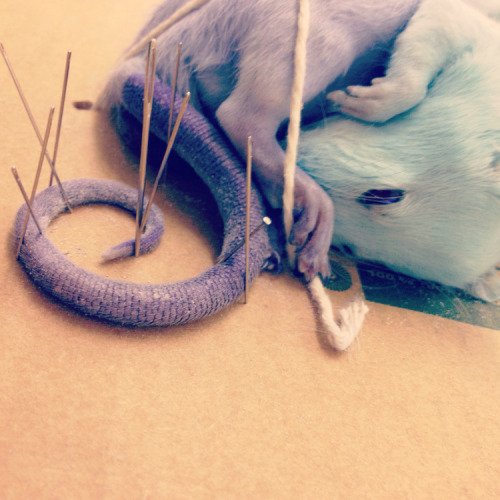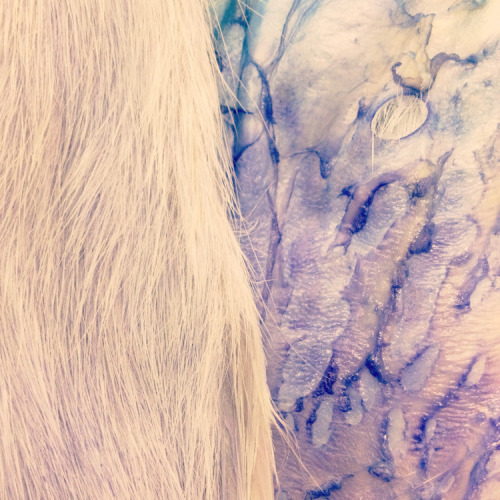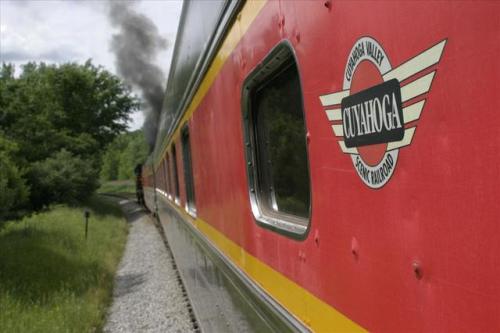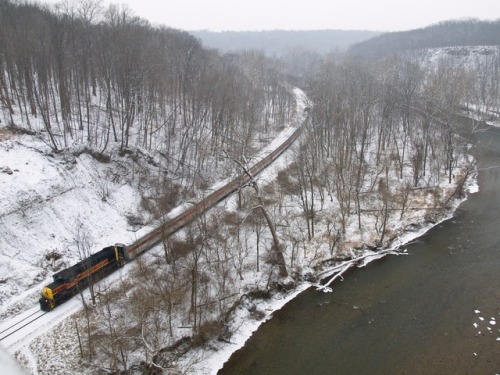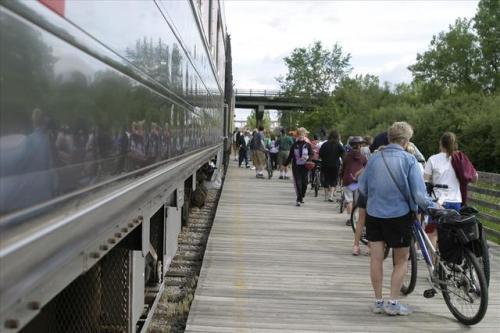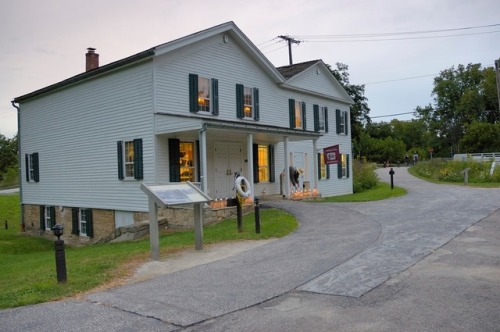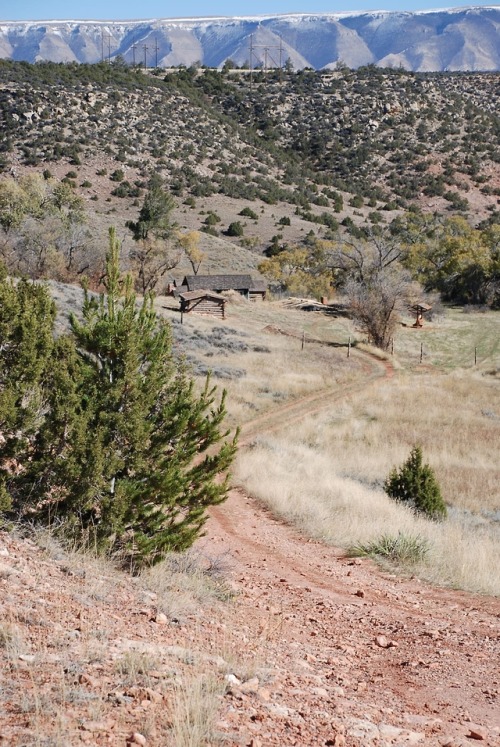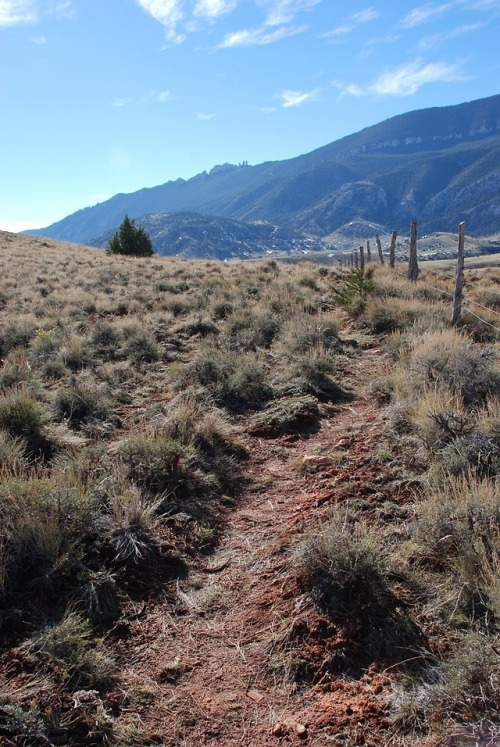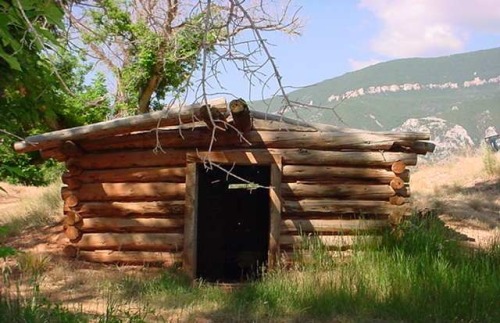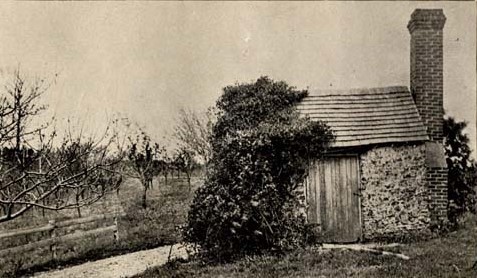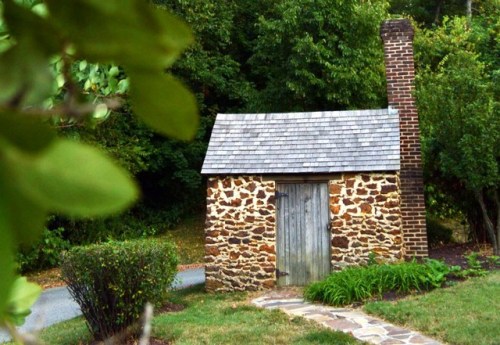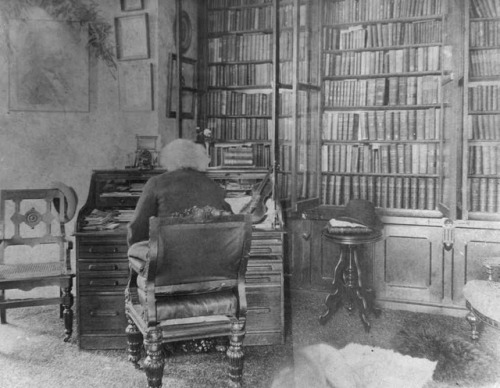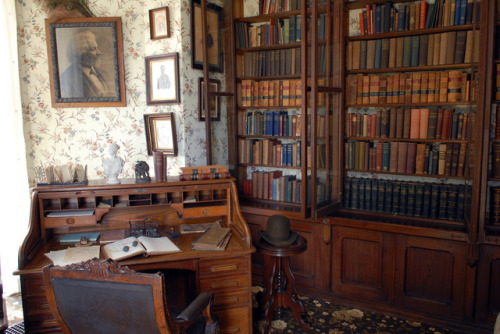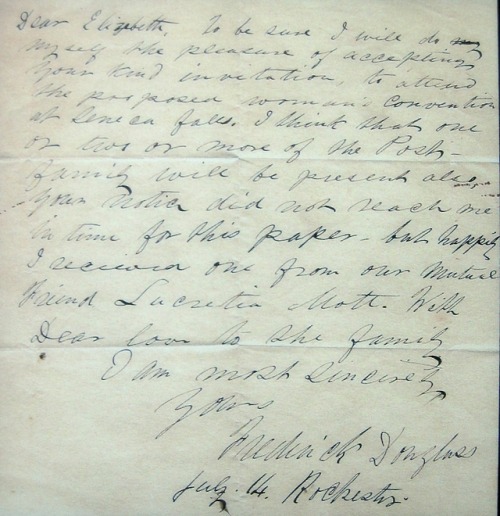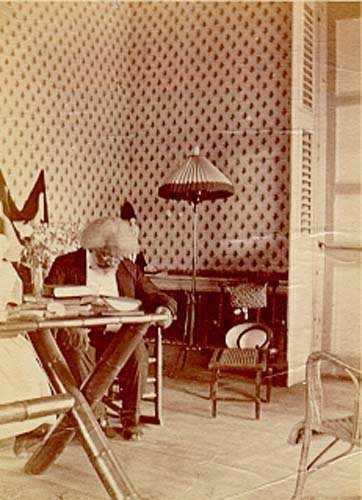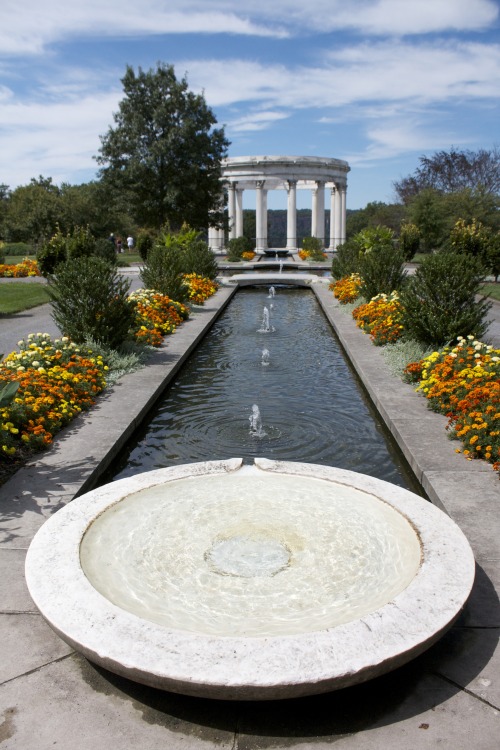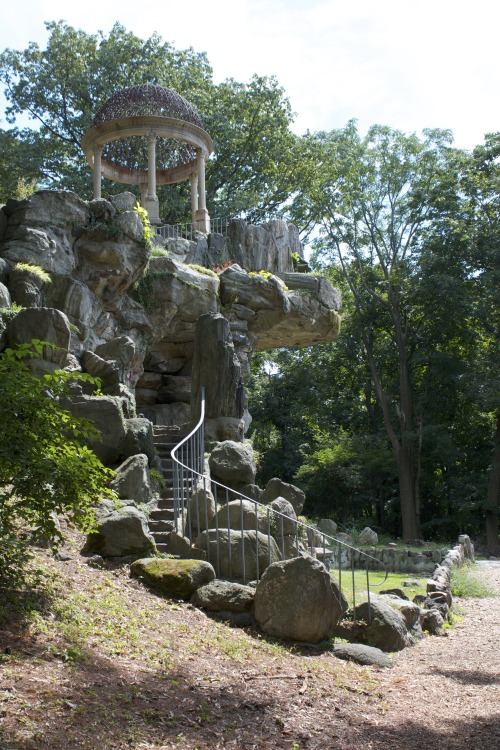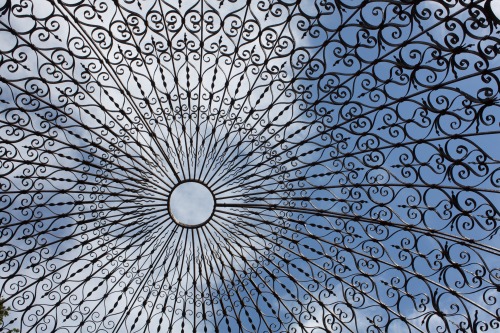#preservation
In 1845, more than 100 men set sail to the New World in the hope of coming across the Northwest Passage, a legendary trade route to Asia (apparently, Lewis and Clark’s failure had only emboldened them). Lead by Sir John Franklin, They set off from Greenhithe, England in two ships, the HMS Terror and HMS Erebus, on 19 May 1845. The two ships carrying the men and their supplies never reached their destination—they were never heard from again. At least not until 1850, when a separate expedition came across what remained of a long-dead community on Beechey Island, including three mysterious graves, and in them the bodies of John Torrington, John Hartnell, and William Braine.More than 100 years later, in 1984, a team of anthropologists traveled to the region to conduct forensic tests on the bodies found in the graves on Beechey Island. After exhumation, it was discovered that all three bodies were spectacularly well-preserved, thanks in no small part to the permafrost in the tundra. So well-preserved, in fact, that the team was able to determine the probable cause of death for the men, who had died some 138 years before.As well as signs of pneumonia and tuberculosis, they learned that each of them had a lethal amount of lead in his system, probably from the ship’s water distillation system, which would have produced high lead content. The amount of lead found in their system was staggering—each man would have needed to consume 3.3 mg a day over the course of eight months to account for it.
Post link
We are currently trying to figure out the best way to store a book made of (admittedly very shelf stable) cheese. Any ideas? #bookconservation #specialcollections #preservation #boxmaking
https://www.instagram.com/p/Bw40tLxAz1A/?utm_source=ig_tumblr_share&igshid=1nb0par1r0z52
Post link
A big part of our day-to-day work is enclosures, both custom to the item and pre-made. We’re very lucky to have a great group of hard working students who help us preserve our collection. #preservation #specialcollections #prsweek #conservation
https://www.instagram.com/p/Bwu4KvngHvP/?utm_source=ig_tumblr_share&igshid=14115smntu6kp
Post link
It’s Preservation Week again! This is a whole week where preservation practitioners share their efforts in preserving our cultural heritage and why this is so important. We will be sharing what we do, tips for you, and resources that could help you in preserving your keepsakes. #bookconservation #specialcollections #conservation #preservation #preswk
https://www.instagram.com/p/Bwkio0KAN_m/?utm_source=ig_tumblr_share&igshid=1n8wm2kccxii2
Post link
Well, that’s one (really bad) way to reattach boards. #bookconservation #specialcollections #bookrepair #conservation #preservation
https://www.instagram.com/p/BwC2Dz9gvyq/?utm_source=ig_tumblr_share&igshid=1hs3ehpkecmbp
Post link
Today, Kennedy, our newest student employee, is learning how to make card boxes for #specialcollections. So far, so good! #boxmaking #preservation
https://www.instagram.com/p/Bphoyc2gRrX/?utm_source=ig_tumblr_share&igshid=5ei3p62l9ve
Post link
‘Host'
'thymus vulgaris’
'fragaria ananassa’
'rosmarinus officinalis’
In my youth I find it hard to understand the concept of death that the deceased aren’t just hiding around the corner. This may seem strange as my practice directly involves the dead but I appear to have lost myself in a fairytale world. I feel that the truly terrifying part of dying is aging, loss of everything you once had and the inability to stop it. Whilst I cannot fathom that I will never see my grandfather again, my breath catches in my throat and my hands shake at the thought of my mother leaving my life. I put this down to me being much more involved in her aging process, I can see it and it feels so real. I believe that this is where the idea for the ‘Host’ series branches from. These three sculpture/instillation pieces combine everything that I think and feel about death, as hard as it is to grasp.
Each piece contains the preserved corpse of a rat playing the role of my Grandfather. It is impersonal and hard to comprehend; suddenly the rat is simply a piece of meat, a soft toy. You’ll never see life in the beads that pretend to be eyes. Each piece also contains herb or fruit bearing plants that play the role of my mother. The first time that you see her she’s young, glowing and immortal. Her branches strong, her leaves luscious, nothing can defeat her. Slowly but surely time scoops her up in his endlessly moving hands and you see change. The branches, once strong begin to weaken; the leaves that were so luscious begin to wilt. You realise that you can never rely on something so frail. You are lost in the depression of death and decay; you cannot see the bigger picture, but you’re the fruit and there is hope. Despite the horror and torture of aging and loss, we must appreciate the beauty and magic that surrounds all life. Yes, you’re mortal but cherish the hope of humankind.
In ‘The World of Perception’, Maurice Merleau-Ponty states; ‘one of the great achievements of modern art and philosophy has been to allow us to rediscover the world in which we live, yet which we are always prone to forget.’ I think that this is a beautiful statement, I often find myself lost in a dream world, with dulled senses, wondering where all the time has gone. I feel that this theory is a large contributor of what got me into taxidermy, searching for a wakeup call. Taxidermy art cannot be ignored, it is in your face and abrupt, it hides nothing about the world we live in.
From my artwork I want viewers to feel their mortality, but also the hope of a larger picture. To gain comfort in the fact that life will continue after them and that every decision and move they make is a small (but nonetheless important) part of human history. I want viewers to find peace and a lessened fear of death. I want them to have an experience.
Leonardo da Vinci said ‘While I thought I was learning how to live, I have been learning how to die.’ Death is an inevitable part of the world in which we live and through learning about death, we remember life.
Post link
Tums Instead Of Buns
The last couple of rats that I have skinned I have begun with the belly instead of the back. When I first began taxidermy, I followed a manual that told be to start from the belly, but I had seen other tutorials that started from the back and I thought those looked easier (when you start from the back the spine and ribs protect all the organs from any slips with the knife). But now I am more experienced I felt comfortable trying out the other way.
I found the skin on the belly a lot easer to cut, it seemed thinner and a lot stretchier. It’s hard to say whether this way was easier or not, I think because it was new to me I found it a lot more exciting but I’m sure that will fade fast. I did find the tail a little harder to do but I think the main body was a lot easier because I was working towards spine and ribs rather than the soft belly, which meant I was tougher and faster.
When it came to the stuffing I did find the change in entry point easier. It was a little confusing to begin with as I had to stuff in an opposite direction but once I got the hang of it, I feel that it sped the whole process up a lot. It also made the sewing up a lot more pleasant, this was always one of my least favourite stages, but the skin was a lot thinner making is sooooo much easier to see through and the position was a lot more versatile.
Finally, the appearance of the rats when completed has improved so much! The slight fuzzy, sewn edge you can see on the yellow rats back is now hidden on the purple and pink ones, success!
I will definitely continue skinning the rats in this way, at least for the curled up rats, as it improves the appearance so much. I feel like I am slowly getting better at better at this, I’m excited for what’s to come next!
Post link
The Rats Are Taking Over
The rat I was skinning a few weeks ago had a huuuuuuuuuuuge poop coming out of its bum (yes, I guess the rumour that you poo yourself when you die is true!) and me thinking it was totally hilarious had a photo taken with it.
But seriously, rats are taking over my life. I’ve been thinking about them constantly and have even dreamed about them loads. I had one dream where all the rats I stuffed came back to life and they could talk and they were all bright colours, which was pretty fun. I feel that that dream in particular boosts my belief about reincarnating the rats into a higher being and ridding them of their mortal bodies.
Maybe I’ll turn into a crazy rat lady, but hey maybe I already am one.
Post link
I Can’t Be Stopped
I’ve only gone and done another one. This is the fourth out of the little sleepy circle rats, meaning only 8 more to go! Once I have 12 I can mount them on my canvas’s ready for the exhibition, what fun.
I used the ‘Apple green’ dye at an attempt to create a green rat. I had not used this dye before so I was unsure what to expect but the dye colour in gunge form was very emerald green so I expected it to
Be quite dark. The colour that has come out is very similar to the lagoon blue, just a little bit more greeny. The colour has come out beautifully on the tail though and I’m sure I could create a more intense colour with a few more coats!
Post link
Production Line
A few weeks ago had two skinned rats ready to become immortal and I felt dangerous, so I thought hey, let’s do them all today! Usually it takes about three hours to stuff a rat after the skinning stage and I managed to get this down to two, having done two in four hours!
I decided to dye one of the rats ‘sunset’ colours (yellow and pink) to go with the midnight rat and the other one I decided to try out my new orange dye. Here you can see them looking very deflated and spooning.
The sunset rat was a great success, the colours came out perfectly and I didn’t need to redo them at all! The stuffing was very quick and easy, I think I’m really getting the hang of it.
And look how perfect it looks with the midnight rat! I stuffed it on the same side so that when I mound them on the canvas they can face each other like this with their tails curling in different directions. Perfect.
Im also happy with how the yellow rat turned out! I would say more of a duckling colour, but still very cute and I think the tail is quite obviously orange, it could maybe be left of for longer or mixed with a bit of red for a more orangey tone? There is also a strange story behind this rat. I skinned it on Halloween and I am sure it is possessed! When I was skinning it I realised its ears and little rat balls were very hard (they are usually soft) and when I skinned it’s eyelid it had a very creepy, hard, white eye (usually red and jelly like). It could of had something to do with being refrozen too much but I’m definitely going to go with possessed.
But overall a very productive day, I hope there are many more to come!
Post link
Reincarnation and Respect
I read this book ‘The Incarnations’ recently and I absolutely loved it. It’s all about reincarnation and old souls, something I’m very interested in. I don’t know a huge amount about reincarnation, I briefly looked at it when I was taught religion when I was younger, but the mention of it grabs my attention. I am not a religious person but once had an ‘epiphany’ like dream that was all to do with reincarnation, so I am always fascinated to hear about it.
I kinda like to think that I am reincarnating my rats into new beings. I am turning them into beautiful, immortal rat gods, ridding them of their rotting body and giving them a new sterile one, which will last forever.
I have been thinking about ways to make the stuffing of my rats more ritualistic and meaningful, perhaps even like an Egyptian mummy, the rats could contain artefacts to take them to the netherworld. My first thought was herbs and spices, I could fill the new, clean body with beautiful smells that also come with meaning. I could also use more natural materials for the stuffing such as fine straw. All these things I will need to research up on in order to carry out a more powerful practice.
Post link
First ombre rat
I recently dyed my first ombre rat. I went for colours blue and purple (the midnight rat) but I was very unsure how it would turn out. The rat that is nailed to the wall in my previous blog is a prime example of the dyes often not coming out as you think. For that rat I used the same blue as I am using now and clearly it didn’t come out as dark as it should of. That is because the rats hair has a lot of natural oil on it that protects it from the conditioner, as well as it being difficult dying on white anyway. But when I dyed this rat I use a few techniques such as hair drying to make the colours more intense (making the dye warm helps it to hold in the hair), although I had never used the purple dye before so I wasn’t quite sure what I was working with.Here hes all wrapped up to dry in correct position and will have to stay like this for a few weeks. I’m really happy how the tail turned out, I thought id try out something new and I think it is very effective. I am thinking of putting this rat and maybe ½ others on my rectangle canvas in Damien hirst fashion, all with ombré dye and cornelian tails.The dyes also created some really interesting patterns on the inside of the skin. Here you can also see the contrast of the soft and pretty outside to the sticky, spongey inside.
Post link
What We Remember: A Reading List on Archives
Why do we keep what we keep — and who decides? An archivist digs and collects longreads on how objects and materials shape public memory.
Post link
The Valley Railway
Cuyahoga Valley National Park, Ohio
By the 1850s, railroads began to replace canals and riverboats as a more efficient transportation option. The Cuyahoga Valley Railway served as the primary rail transportation for the Valley from 1871 to 1915, and the railway evolved into a part of everyday life for residents throughout Ohio’s Cuyahoga Valley.
Along the Valley Railway, new structures were built to accommodate the goods and people moving along the route. Bridges allowed the railroad to cross the ever changing topography. Mills which soon grew into company towns were constructed along the expanding route, as farmers embraced the railroad to ship their products to markets in Cleveland or Akron.
The ultimate end of the Valley Railway’s existence came in 1915 when the B&O assumed complete ownership of what had by that time been renamed as the Cleveland, Terminal and Valley Railroad. Five years later, in 1920, rail companies nationwide were forced to examine their role with the realization that there were cheaper and more efficient modes of transportation capable of carrying loads of coal, heavy ores, passengers and a wide variety of materials via the use of semi-trucks and more powerful locomotives. Because the region – and the nation – was now experiencing the positive commercial effects of alternative shipping methods, heavy reliance on rail service in the Cuyahoga Valley declined.
When interest in the line was renewed as a scenic excursion route in the early 1970s, the Cuyahoga Valley Preservation and Scenic Railway Association was formed. Originally known as the Cuyahoga Valley Line, the scenic railroad now operates as Cuyahoga Valley Scenic Railroad. Although it’s just one part of the transportation history of this area, the vital role of the Valley Railway can still be seen across the landscape at Cuyahoga Valley National Park.
Read the full article at nps.gov: Find more about the transportation history of this area, the development and decline of the Valley Railway, and the features of the cultural landscape: Cuyahoga Valley Railway Cultural Landscape
Thanks to Historian Larry Johnson for contributing this article!
Post link
Links to the Past: Public Golf Courses of Washington, D.C.
The three National Park Service golf courses in Washington, D.C. have a fascinating and complex history. Initially built between 1918 and 1939, the courses have hosted numerous tournaments, presidents of the United States, renowned American golfers, and countless local citizens.
The golf courses also played a role in the civil rights movement. Activists successfully protested for equal access to the courses and helped inspire the integration of the city’s recreational facilities in 1941.
TheNPS has completed studies on the history and design of the three golf courses (East Potomac Golf Course, Langston Golf Course, and Rock Creek Golf Course), including treatment guidelines for the long-term stewardship of the courses.
Now, a long-term lease opportunity is available for the golf courses, and the NPS is in search of an operator who’s committed to providing affordable and easy-to-access golfing, to improving facilities and courses, and to preserving the unique histories and landscapes of each of these courses.
For information about developing and submitting a proposal:
- News release: “Hole-in-one business opportunity with the National Park Service”
- Request for Proposals (RFP)
- Proposals must be received by the NPS by 4pm EST on November 27, 2019.

Langston Golf Course, first opened in 1939, is one of three 18-hole golf courses on National Park Service land in Washington, D.C. (NPS).
Post link
Caroline Lockhart: Author, Newspaper Publisher, Investigative Reporter, Rancher
Caroline Lockhart began her career as a journalist at the age of 18. In 1889, she became a reporter on the Boston Post. She quickly became known for her adventuresome, independent spirit, pursuing tough assignments as she developed one of her literary principles: “…I have endeavored to know what I am writing about before I write.”
Later, traveling on assignment for a story about the Blackfeet Indians, Lockhart found Cody, Wyoming and the surroundings to be to her liking. It was also a useful backdrop and inspiration for her books, often focused on western themes and characters.
The Lockhart Ranch
In 1926, she purchased a ranch in Montana, located in what is today Bighorn Canyon National Recreation Area. She inherited a two-room cabin, a few run-down sheds, and 20 acres of cultivated ground from the previous owners of the ranch. In addition to it being her residence and a retreat in which to pursue her writing, she added to the acreage and developed a sizable commercial ranching operation. She landscaped the area around the cabin with irises and hollyhocks, planted cottonwood trees for shade, and built stone pathways. She also constructed fences, corrals, irrigation systems, and additional structures.

Main ranch house at Lockhart Ranch (NPS).
Life on the ranch, which she expanded in size to over 6,034 acres, was mostly self-sufficient, as evidenced by features of the landscape. A storage building was used to keep potatoes, apples, and meats. Milk, butter, and eggs from ranch cows and chickens went from the milk shed and the chicken coop to the spring house to chill. A small apple orchard was an important part of the ranch agriculture. Maintaining equipment, repairing items, and shoeing horses made the blacksmith shop a necessity. In the corrals, livestock were branded and separated for sale.
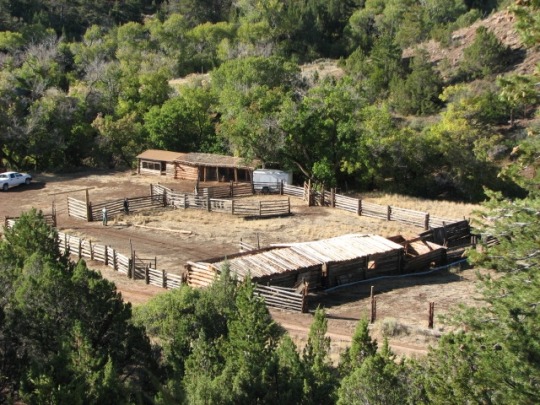
Corral at Lockhart Ranch (NPS).
Today, the ranch landscape appears much as it did when Caroline Lockhart was living there. It provides visitors with a window to the operations of a ranch in the Dryhead area during the first part of the 1900s and an introduction to the spirited woman who embraced this part of the country in both her life and her writing.

An ornamental willow gate hangs partially open, welcoming visitors to the Lockhart Ranch (NPS).
Sources and More
- Caroline Lockhart and the Caroline Lockhart Ranch, Bighorn Canyon National Recreation Area
- Caroline Lockhart Ranch: National Register of Historic Places Nomination
- Historic Ranches of Bighorn Canyon National Recreation Area
- Caroline Lockhart Ranch, Bighorn Canyon National Recreation Area (Draft, 1981)
- Images of Lockhart Ranch
- Artist-in-Residence Program at Bighorn Canyon
- More about NPS cultural landscapes
This month, we are exploring a few of the NPS cultural landscapes associated with writers and writing. Catch any you missed or add your own favorites with #literarylandscapes
Post link
Landscapes of Literature: Frederick Douglass at Cedar Hill
At the Washington, D.C. home where Frederick Douglass lived from 1877 until his death in 1895, his relationships to language and to the landscape continue to come alive.
In the home known as Cedar Hill, bookcases line several walls of thelibraryaround the heavy wooden desk where Douglass read and wrote.
What books and booklets were in Frederick Douglass’s collection? Find a list of items in the NPS collection.
A walkway from the back of the house leads to a cozy windowless retreat, where Douglass kept a second desk filled with books and paper to write, read, and quietly contemplate. He called the structure the “Growlery,” a title used by characters of several Dickens novels to describe “a retreat for times of ill humour.” In the comfortable sanctuary of his Growlery, Douglass was able to study and write in peace. Once draped in vines and surrounded by fragrant shrubs, the structure is also thought to have fulfilled Douglass’s desire to work in a natural setting.

Photograph taken in the 1930s looking south from the historic house. Frederick Douglass’s Growlery (left) and barn (right) are visible, and a clothesline stretches between two trees over the backyard (NPS / Frederick Douglass National Historic Site).
Every year, the NPS hosts an oratorical contest in the auditorium at the Frederick Douglass National Historic Site for students in grades 1-12. The goal of the contest is for students to experience the same transformative power of language that Frederick Douglass experienced as a young man.
This year’s contest will be held on December 6-7, 2019, and students from across the country are invited to apply.
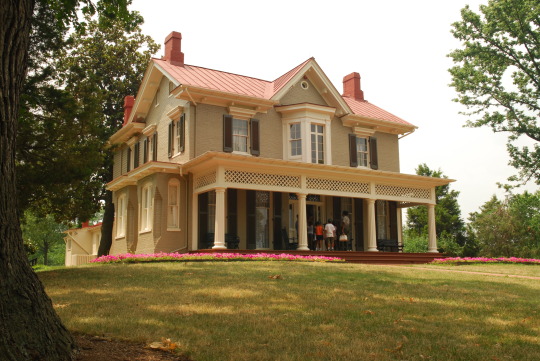
The house and surroundings of Cedar Hill, Frederick Douglass National Historic Site (NPS).
Discover More
- Frederick Douglass National Historic Site website
- Cedar Hill: Frederick Douglass’s Rustic Sanctuary
- Frederick Douglass National Historic Site Cultural Landscape Inventory
- Frederick Douglass National Historic Site Landscape Preservation Maintenance Plan
Additional image information can be found in NPGallery.
This month, we are exploring a few of the NPS cultural landscapes associated with writers and writing. Catch any you missed or add your own favorites with #literarylandscapes
Post link
Taxidermy baby duckling. There is wire threaded through the feet to help with stability. $40 PPD in the US. Visit our online shop to purchase.
Post link
Host Body was formed in August 2017 by the creators of @roadvirusbus as a way to further our interests in taxidermy, wet specimens, and other oddities and natural arts. We specialize in the creepy and gross, the occult and esoteric, and the downright beautiful. Shop coming soon.
Post link

Cemetery Cleaning day in Natchitoches, Louisiana this Saturday!
Concrete Is Beautiful
Alvar Aalto: Paimio Sanatorium. 1929
Take a seat and check out thisbook. Reading how this building has been conceived from the beggining worth it. This is Human empathy,
Indeed, it was nominated to become a UNESCO World Heritage Site.
In the link below there’s an article byEllis Woodmanrevisiting this modern architecture gem. Enjoy!
Image: Longitudinal Section. Paimio Sanatorium. Alvar Aalto.1929
Alvar Aalto’s iconic sanatorium is for sale
Aalto designed the building accurately, the concept of its architecture and interior spaces were conceived as a “medical instrument.” Given the sanatorium’s history and its subsequent functions, wishing the future new owners to preserve the iconic space.
Post link
Last week I visited the Untermyer Gardens in Yonkers. I took the Metro North and walked up quite a hill to get there, and it was worth it! The gardens have really beautiful views. It is a small property compared to the botanical gardens I have been visiting, so it didn’t take long for me to see everything, but it’s the kind of place that makes you want to stop and stay awhile, I brought a book and enjoyed reading on benches throughout the gardens. There were a handful of succulents, but overall a nice mix of different plants (marigolds were in abundance when I visited). The architecture was beautiful (the water feature in the walled garden was a favorite). Some of the garden areas feel like ruins, with columns still standing, but their former states have been lost. The gardens are located in an unusual area, surrounded by medical buildings, but stepping into the walled garden you feel like you have entered into a very special place. The grounds have a lot of potential and I hope that the idea is to preserve as well as to rebuild some of the areas to their former states. A lovely day trip.
Check out their lovely tumblr page here.
Post link
“I wish ancient people preserved their writing and artifacts better” I write in electronic signals on a piece of hardware that can’t retain its efficacy for more than a few decades.
Time to laser-print my entire blog on titanium plates and bury them underground.
brb etching my one-star yelp review of the sheet metal supplier that sold us shitty copper on a granite slab
We are never going to give this guy a fucking break are we
Ea-nasir knows what he did.
But more importantly, WE know what he did. Because it got written down in some rocks.
The funny part is that clay tablets are supposed to be ephemeral. When you’re done with them you just soak them in water, smooth them out, and re-use them for a different message. They weren’t meant to be any more permanent than an email.
The only reason we still have that particular clay tablet is because a. Ea-nasir was a huge weirdo who collected all of his hate mail, and b. his house later burned down, and coincidentally did so at exactly the right temperature to bake the collected tablets into pottery rather than destroying them.
It’s basically the equivalent of an email getting inscribed onto a steel plate by accident.
gee, wonder why his house burned down…
Before being assembled into something recognizable at a museum, most dinosaur fossils look to the casual observer like nothing more than common rocks. No one, however, would confuse the over 110 million-year-old nodosaur fossil for a stone.
The fossil, being unveiled today in Canada’s Royal Tyrrell Museum of Paleontology, is so well preserved it looks like a statue.
Even more surprising might be its accidental discovery, as unveiled in the June issue of National Geographic magazine.
On March 21, 2011, Shawn Funk was digging in Alberta’s Millennium Mine with a mechanical backhoe, when he hit “something much harder than the surrounding rock.” A closer look revealed something that looked like no rock Funk had ever seen, just “row after row of sandy brown disks, each ringed in gunmetal gray stone.”
What he had found was a 2,500-pound dinosaur fossil, which was soon shipped to the museum in Alberta, where technicians scraped extraneous rock from the fossilized bone and experts examined the specimen.

“I couldn’t believe my eyes — it was a dinosaur,” Donald Henderson, the curator of dinosaurs at the museum, told Alberta Oil. “When we first saw the pictures we were convinced we were going to see another plesiosaur (a more commonly discovered marine reptile).”
More specifically, it was the snout-to-hips portion of a nodosaur, a “member of the heavily-armored ankylosaur subgroup,” that roamed during the Cretaceous Period, according to Smithsonian. This group of heavy herbivores, which walked on four legs, likely resembled a cross between a lizard and a lion — but covered in scales.
Unlike its cousins in the ankylosaur subgroup, the nodosaur lacked a bony club at the end of its tail, instead using armor plates, thick knobs and two 20-inch spikes along its armored side for protection, according to the Smithsonian Museum of Natural History.
“These guys were like four-footed tanks,” dinosaur tracker Ray Stanford told The Washington Post in 2012.
This particular one, according to a news release, was 18 feet long and weighed around 3,000 pounds.
As Michael Greshko wrote for National Geographic, such level of preservation “is a rare as winning the lottery.” He continued:
The more I look at it, the more mind-boggling it becomes. Fossilized remnants of skin still cover the bumpy armor plates dotting the animal’s skull. Its right forefoot lies by its side, its five digits splayed upward. I can count the scales on its sole. Caleb Brown, a postdoctoral researcher at the museum, grins at my astonishment. “We don’t just have a skeleton,” he tells me later. “We have a dinosaur as it would have been.”
The reason this particular dinosaur was so well preserved is likely due to a stroke of good luck. (Well, perhaps a stroke of bad luck for the poor nodosaur.)
Researchers believe it was on a river’s edge, perhaps having a drink of water, when a flood swept it downriver.
Eventually, the land creature floated out to the sea — which the mine where it was found once was — and sank to the bottom.
There, minerals quickly “infiltrated the skin and armor and cradled its back, ensuring that the dead nodosaur would keep its true-to-life form as eons’ worth of rock piled atop it.”
That is a boon to researchers, particularly given that teeth and bone fragments are much more common finds.
“Even partially complete skeletons remain elusive,” Smithsonian reported.
Sican Culture surgeon found in funerary bundle
“…the bundle was finally excavated in late 2021, revealing an individual from the Middle Sican period around AD 900-1050. Based on the type of good associated within the bundle, the researchers suggest that the individual likely served as a surgeon.”
App State archaeological research in Linville Gorge Wilderness area
“Gokee said the project is an “incredible opportunity for our students to cultivate key practical skills for archaeology,” citing field methods for discovering and documenting sites, methods for identifying and studying artifacts, and practical experience in working with partners in the U.S. Forest Service and in writing technical reports and grant proposals.”
Roman boat that sank in Mediterranean 1,700 years ago gives up its treasures
““This is one of those finds when you are just laughing all the time because you can’t believe it,” says Cau. “This is the sort of thing that happens to you once in an academic lifetime. We will never find anything like this again and that’s what makes it so special.””

